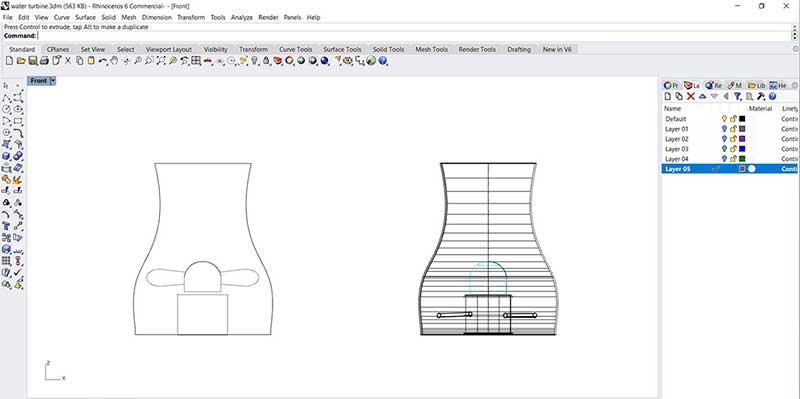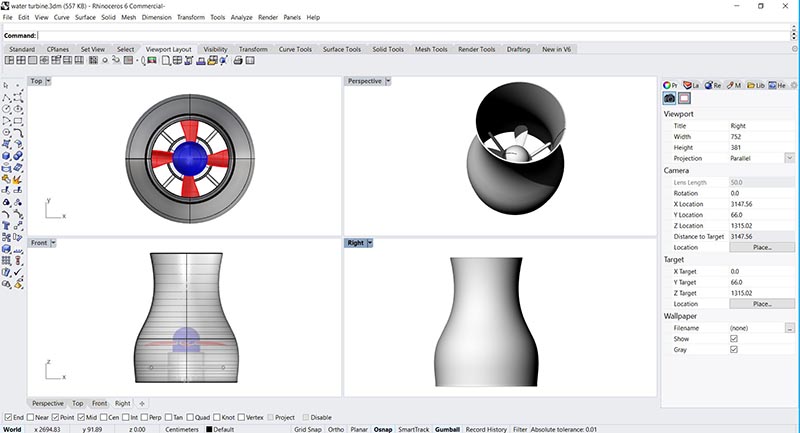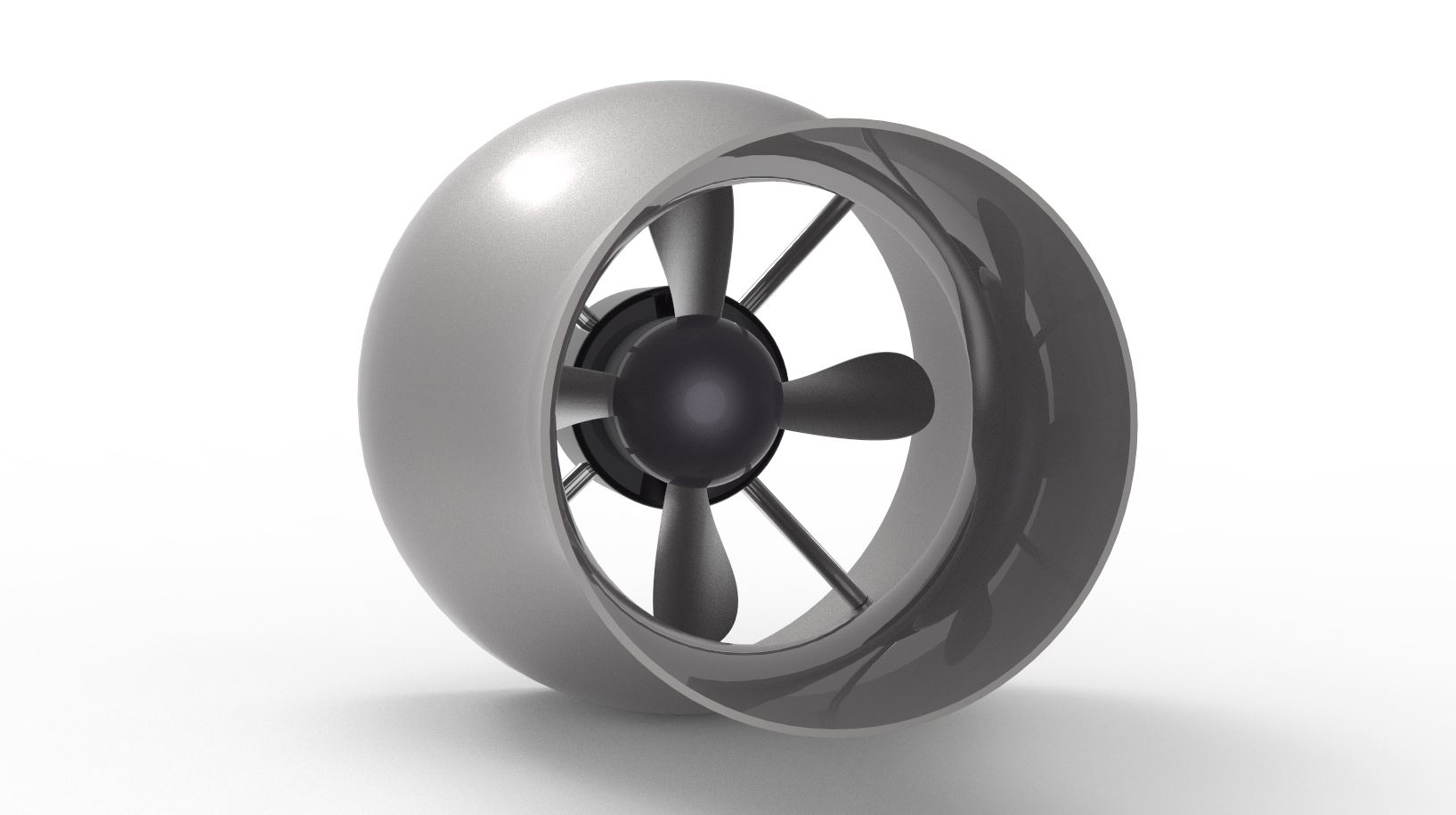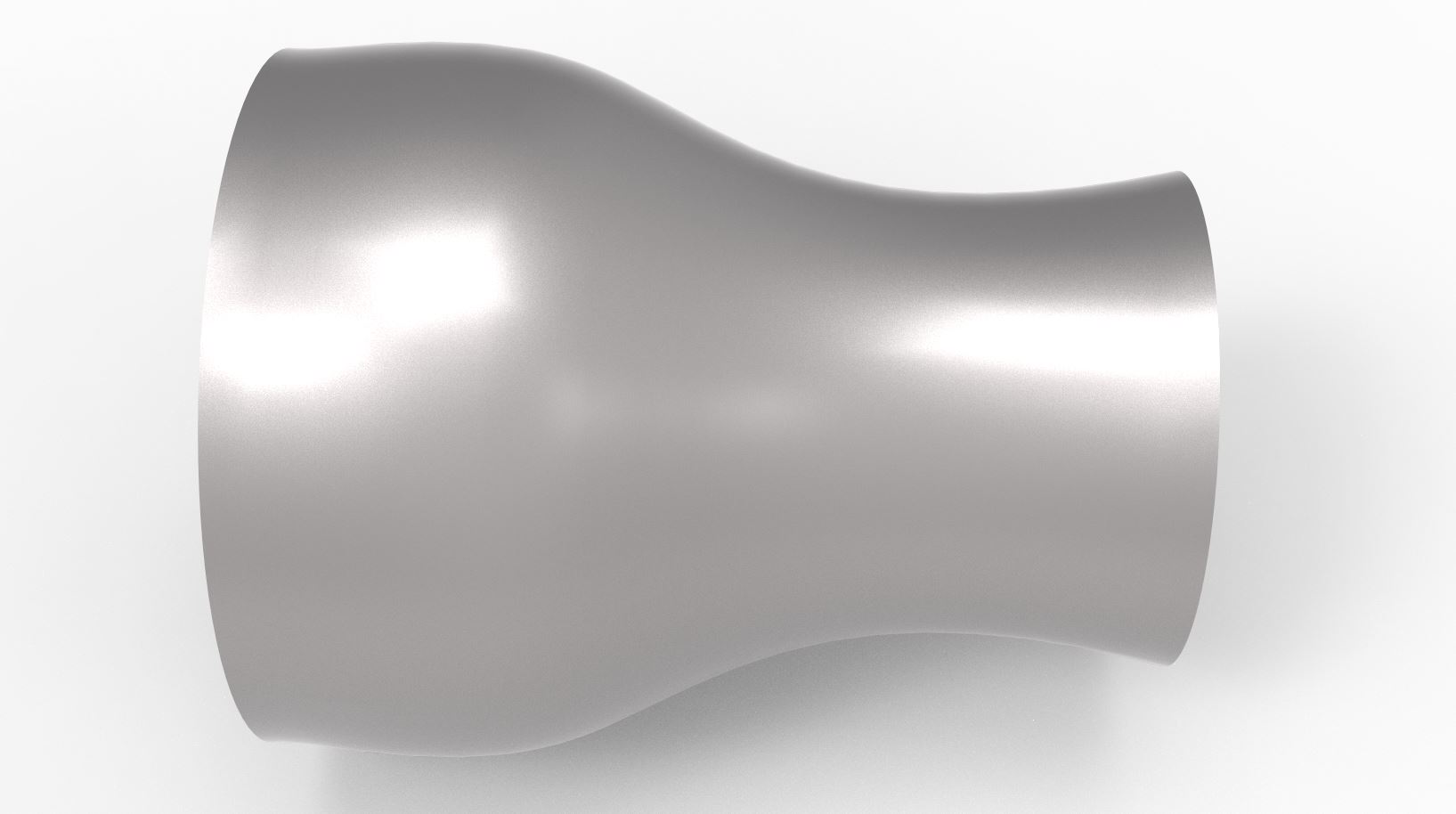Week 2
Computer Aided Design
Week 2 - Assignments
• Model a possible final project in 3D
• Render the model .
This week we were introduced to computer aided design.
For 2d drawings i use illustrator personaly but when in am working with 2d drawings in the lab i use Inkskape.
But when i am designing something that is ment to be 3d i do the skech in 2d in rhino and bring it to 3d within Rhino

Rhino 3d modeling software
For 3d modeling i used Rhino 3d modeling software to design the concept of my final project
 https://www.rhino3d.com/
https://www.rhino3d.com/

Rhino 3d file
[ water-turbine.3dm ]For rendering the turbine i used Keyshot render software
 https://www.keyshot.com/
https://www.keyshot.com/
I made a turntable rendering to show the turbine from all sides
I found out that Keyshot can make HTML code and a javascript to make a turntable interaction to show my project
I uploded images and script files to my page and made it work for my site
Click and move the mouse left and right to turn the turn the drawing
Double click to see the water turbine in full screen
Rendered still images
I also used Keyshot to make a realistic redered images of the water turbine
Made a front side and back view renderings.
Front view

Side view

Back view

Rhino 3d file
[ Keyshot Package file ]Final Project




The portable water turbine
I have a little fishing hut by a river in a rural part of south Iceland. This hut is quite primitive with no running water and almost no electricity. When I say almost, its because I have solar cells on the rooftop to engine a few lights to help over the darkest hour. As for other equipment, I have a gas stove to cook and a gas heater to keep warm and prevent the hut from molding. Some might say that this hut is to primitive to use but for me its quite the opposite. Sometimes the only therapy you need is to get away from the hectic everyday life and experience the peace and quiet, and that is what I get in my hut.
That said, of course here are some aspect of my hut that I would like to adjust. The solar cell for example does not function as it could due to scars sunlight in the winter time in Iceland. That, combined with the long dark days, makes it hard to rely on solely.
Like I said before, the hut is situated by a river. In Iceland we have a long history of harvesting rivers and streams for electricity. Iceland gets about 71% of its electricity this way and another 22% from geothermal harvesting. These facts are part of the Icelandic culture and shape the way we think about our nature. Therefore, it was a natural step to try to harvest the river by my hut to make my own electricity with some kind of a water turbine.
But I didn’t want to stop there. As much as I love my hut, I also enjoy traveling through the wilderness of Iceland, by cars, horses and on my feet. And as much as I enjoy the peace and quiet, I also know that the weather in Iceland can change rapidly and you should always have a fully charged phone or an emergency locator of any kind. This, as well as the fact that the Icelandic wilderness is full of rivers and water streams got me to the idea to find a way to make a small, portable water turbine, efficient enough to charge a phone, a radio or similar.
ABOUT ME As a trained pilot and graphic designer working for a furniture manufacturer, I have always been fascinated by how things work. I am a craftsman by nature and have a deep need to understand “the material” and its capacity. Being married for over twenty years, a father to three kids and living in the countryside has also been the theme for most of my adult life, making me inclined to always try to find practical ways to better my surrounding for the benefit of the whole. My Fab Academy project regarding a portable water turbine originates from these elements and will hopefully benefit others as well.Final project
| Developer: | Magnus St. Magnusson |
| Category: | Electric generating device |
| Skill: | Electric, 3d design, 3d printing, CNC mill |
| Date Post: | 04 February, 2020 |
| Tags: | Electric Turbine, Electric generation |
Magnús St. Magnússon © 2020| v1
Madefor FabAcademy